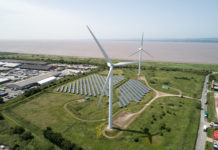 Richard Howard, research director at Aurora Energy Research, outlines key challenges and opportunities facing the energy sector in 2019.
Richard Howard, research director at Aurora Energy Research, outlines key challenges and opportunities facing the energy sector in 2019.
Capacity Market suspension: this is right at the forefront of people’s minds and came as a significant shock to the industry.
- There are a number of scenarios for how this plays out. At one extreme it is possible that the EC grants State Aid with no further changes required, and the original contracts are reinstated in full some time next year. At the other extreme, if the EC’s assessment deems the scheme to be unfair then it is possible that existing CM contracts could be annulled and auctions would need to be rerun. There are other possible scenarios in between these two scenarios – for example an outcome where changes are made going forward, but existing contracts are reinstated.
- This poses a short term challenge for some players in terms of cashflow, since they would have been relying on these payments for winter 2018/19.
- It also poses challenges for projects which were about to start construction for winter 2019/20 – since some of these project had not yet been financed, and will struggle to move forward given current uncertainties.
- For existing CM contract holders, there are some uncertainties about whether they still need to meet CM obligations, and whether CM payments for 2018/19 could be backdated at some point in the future.
- If the CM is not reinstated quickly then this could lead to some capacity coming off the system and/or new capacity not building, which would lead to tighter margins and higher prices – partially offsetting the loss of CM revenues for remaining plants.
- Looking further ahead – Government is also supposed to be doing the five-year review of EMR, reporting by summer. We would expect them to be looking at the penalty regime, CM agreement term, derating factors for DSR and interconnectors, and participation of renewables – among other things. Although I imagine the CM team will be pretty busy on the CM suspension, so it remains to be seen what happens in this space.
Ofgem TCR consultation: if implemented as proposed, this has potentially significant implications for plant at all levels.
- The changes to Triad payments would significantly reduce margins for Behind the Meter projects, putting some projects at risk.
- The changes to BSUoS would impact embedded generators (including peakers, batteries and embedded renewables). Depending on how this is implemented this could be a double whammy for those affected – e.g. losing BSUoS benefits and also having to start paying BSUoS charges.
- The changes to the TGR payments could be material for transmission-connected capacities (e.g. CCGTs, offshore wind etc). In Ofgem’s own assessment it highlights the risk to CfD-backed offshore wind projects as a result of this change.
- We will be doing further detailed analysis of all of the above in the new year.
Upcoming CfD auction: the Government recently announced the budget for the upcoming CfD auction in Spring.
- Although the budget (£60m) was lower than people were expecting, the low administrative strike prices and higher market reference prices mean that the auction pot can allow several GWs of capacity to be built.
- At the extreme, if sufficient wind capacity bids in 2024/25 at or below £53/MWh then the capacity secured could hit the 6GW auction cap.
- Adding this much intermittent capacity on to the system will obviously add more volatility to the system, which could be beneficial for batteries and peakers – albeit that the capacity would not come through until around 2024.
Brexit: the ongoing Brexit-related uncertainties clearly have an impact on investment generally. For the energy sector Brexit also has some impacts particularly on carbon markets and interconnectors:
- There is some uncertainty regarding the UK’s ongoing participation in the EUETS. In a no deal scenario it looks like that we would exit the ETS and instead have a Carbon Emissions Tax at a fixed level of £16/tonne. In a Deal scenario there are a few possibilities – ranging from continued membership of the ETS, to a linked UK ETS scheme, to a simple Carbon Emissions Tax.
- A no deal Brexit could have impacts on the prospects for interconnector projects. Coming out of the IEM could make power trading across interconnectors somewhat less flexible, leading to lower congestion rents. On top of this, outside the EU the UK could decide to make changes to the existing regimes which favour interconnectors (for example interconnectors are currently exempt from grid charges as a result of EU rules – this could change after Brexit).
Related stories:
2019 energy outlook: Verv chief executive Peter Davies
Follow us at @EnergystMedia. For regular bulletins, sign up for the free newsletter.



